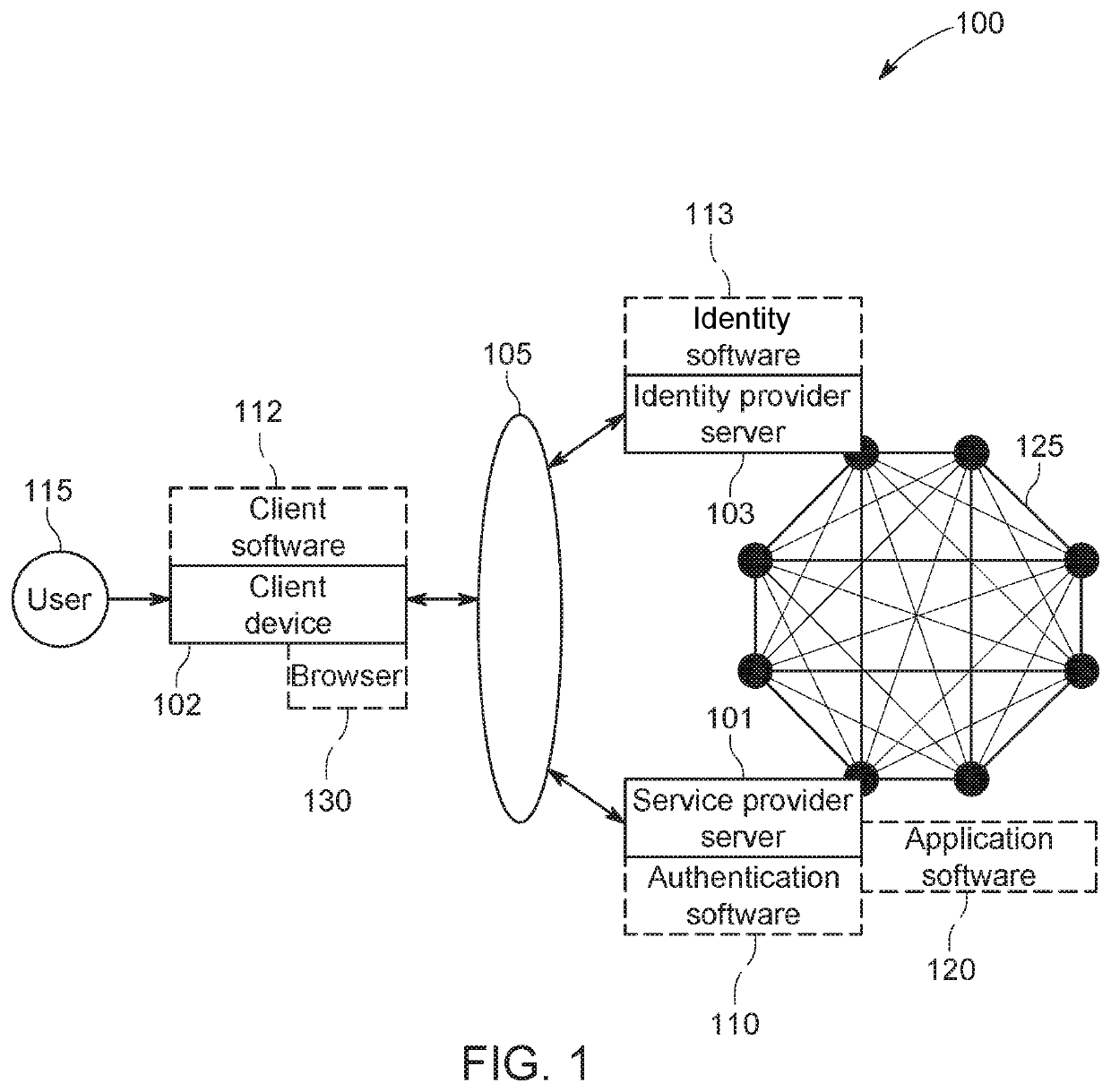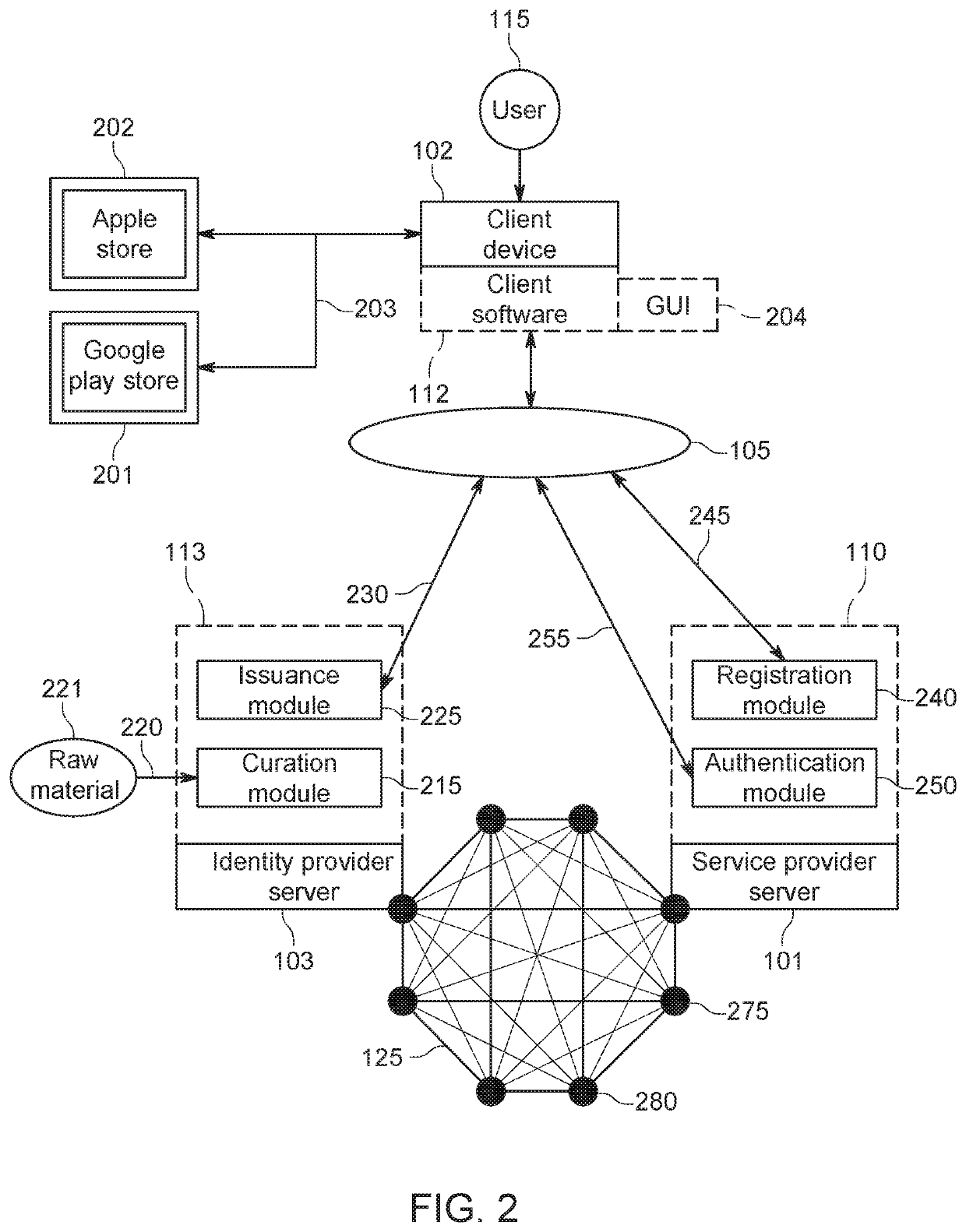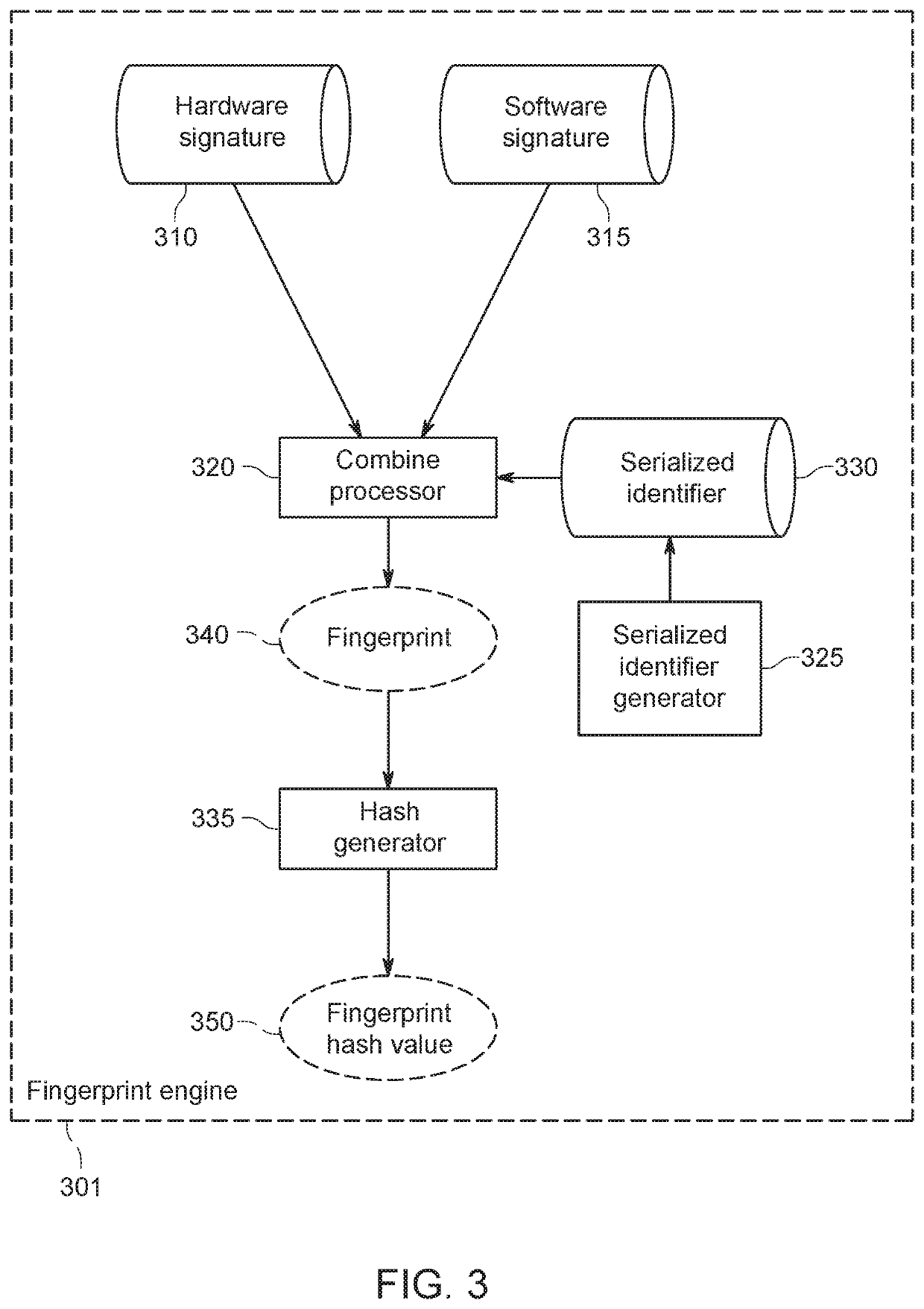System and Method for Memetic Authentication and Identification
a technology of authentication and identification, which is applied in the field of system and method for identity and access management, can solve the problems of difficult selection, protection, and recall of text-based authenticators by humans, and achieve the effects of minimizing the risk of human error, improving the overall security of the system, and increasing entropy
- Summary
- Abstract
- Description
- Claims
- Application Information
AI Technical Summary
Benefits of technology
Problems solved by technology
Method used
Image
Examples
Embodiment Construction
[0051]The following description and the drawings illustrate specific embodiments sufficiently to enable those skilled in the art to practice the system and method described. Other embodiments may incorporate structural, logical, process and other changes. Examples merely typify possible variations. Individual components and functions are generally optional unless explicitly required, and the sequence of operations may vary. Portions and features of some embodiments may be included in or substituted for those of others.
[0052]In general, the present design includes a system and method for memetic authentication and identification. The memetic authentication and identification system and method disclosed herein integrate memetic authenticators with multilateral verification and episodic re-verification techniques.
[0053]As used herein, the phrase ‘memetic authenticators’ is defined as a type of authenticator that is de-identified, passwordless, self-selected, self-customized, and render...
PUM
 Login to View More
Login to View More Abstract
Description
Claims
Application Information
 Login to View More
Login to View More - R&D
- Intellectual Property
- Life Sciences
- Materials
- Tech Scout
- Unparalleled Data Quality
- Higher Quality Content
- 60% Fewer Hallucinations
Browse by: Latest US Patents, China's latest patents, Technical Efficacy Thesaurus, Application Domain, Technology Topic, Popular Technical Reports.
© 2025 PatSnap. All rights reserved.Legal|Privacy policy|Modern Slavery Act Transparency Statement|Sitemap|About US| Contact US: help@patsnap.com



